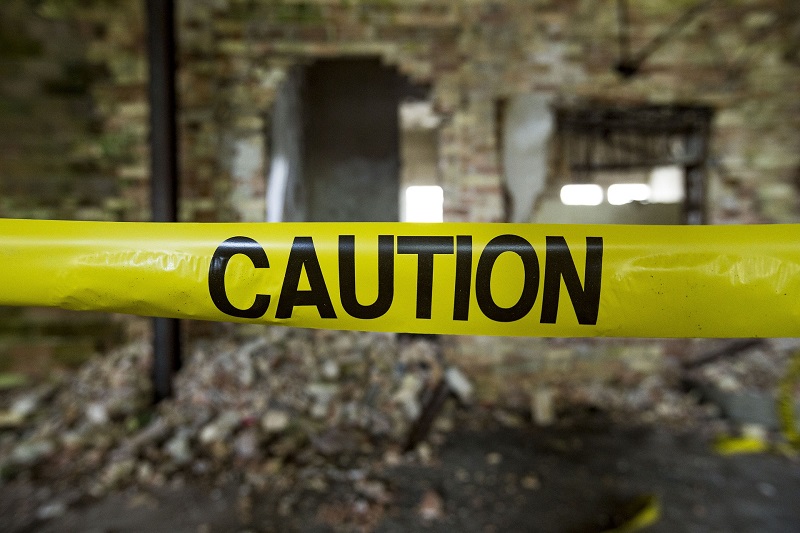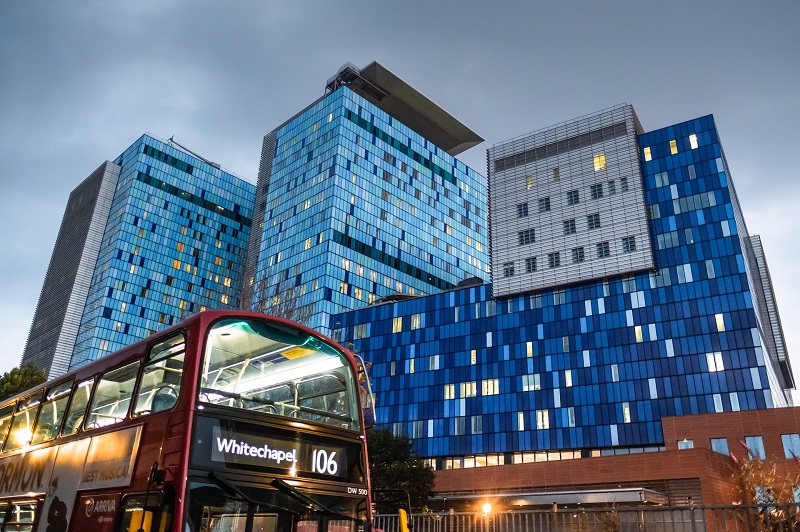Results have been published from the 2019/20 Estates Return Information Collection (ERIC), a mandatory collection for all NHS trusts including ambulance trusts. Key figures include:
- The total costs of running the NHS estate were £9.7billion., compared to £9.4billion in 18/19, up 2.55%
- The total energy usage from all energy sources across the NHS estate amounted to 11.3 billion kWh
- The total estimated cost to eradicate backlog is £9billion
- The total cost for cleaning services was £1.1billion
- The total cost of providing inpatient food was £600m
- Laundry and linen services cost the NHS £209m
- Water and sewerage costs were £88m
- The total cost of waste management was £136m
- Portering services cost £340m
- Capital investment for new-build facilities was £1.2billion
The cost of running the NHS estate in the year 2019-20 was £9.7billion, with the estimated cost of backlog maintenance spiralling by more than 37% to a whopping £9billion, according to new data released by NHS Digital.
The figures are outlined in the annual Estates Return Information Collection (ERIC) report, a mandatory collection for all NHS trusts in England and Wales, including ambulance trusts.
Delayed due to the Coronavirus pandemic, the data covers the period from April 1 2019 to March 31, 2020, shortly before the first COVID-19 lockdown, which is expected to have impacted services further.
It covers information relating to the costs of providing and maintaining the NHS estate, including buildings, maintaining and equipping hospitals, the provision of services including laundry and food, and the costs and consumption of utilities.
It shows how rapidly our very-old NHS estate is falling into disrepair, putting patient lives at greater risk and making it much more difficult for frontline staff to provide the right quality of care
This year it covered a total of 10.081 sites, with a total gross internal floor area of 26.8 million sq m, including 221 general acute hospitals, 656 mental health facilities including specialist services, 248 community hospitals, and 51 specialist hospitals.
And the data shows that running costs for the NHS estate were £9.7billion, compared to £9.4billion in 18/19, an increase of 2.55%.
Addressing the backlog
The increase can be attributed to pay inflation for EFM staff, rates payable to local authorities, and an increase in the numbers of sites which are now reported on.
Also significant was the estimate that a staggering £9billion is now needed to cover the cost of backlog maintenance, up nearly 37.5% on the previous year.
This figure is a measure of how much would need to be invested to restore a building to a certain state based on assessed risk criteria.
It does not include planned maintenance work, but is rather work that should already have taken place.
Of this figure, £1.5billion is for work deemed ‘high risk’, £3.1billion is ‘significant risk’, while ‘moderate risk’ work totals £3.2bn, and ‘low risk’ improvements stands a £1billion.
All these figures are a significant increase on the previous year, and have been described as ‘alarming’ by Chris Hobson, chief executive of NHS Providers.
This problem poses an increasing threat to safety. It's also impacting directly on the response to the pandemic
He said: “These figures show there's been an alarming nearly-40% increase in the NHS maintenance backlog bill from £6.5billion to £9billion in the space of a year.
“It shows how rapidly our very-old NHS estate is falling into disrepair, putting patient lives at greater risk and making it much more difficult for frontline staff to provide the right quality of care.
“The backlog is now broadly equivalent to the annual cost of running the entire NHS estate.
“More worrying still, over half of this is for work of ‘high’ or ‘significant’ risk.
“In short, this problem poses an increasing threat to safety. It's also impacting directly on the response to the pandemic.”
Paying the price
Among the issues reported by members of NHS Providers are the difficulties of expanding capacity at pace, providing oxygen support, and ensuring high levels of infection control in old and outdated buildings.
"Unfortunately, it is patients and service users who are paying the price for this backlog, reflected by the sharp rise in clinical service incidents,” said Hobson.
To try and address some of the issues, Health Secretary, Matt Hancock, last year announced a £600m moneypot to tackle critical maintenance work.
The funding has been released to 178 NHS trusts to cover almost 1,800 maintenance projects, which will be completed by March.
These will tackle a range of issues, including upgrades to electrical infrastructure, improvements to ventilation, works to improve fire safety, building new facilities to deliver key services, and replacing hospital lifts.
The cash is part of a wider £1.5billion capital funding package which was announced in the summer to build an NHS fit for the future, which also includes plans to modernise mental health facilities, expand A&E capacity, and improve infection control ahead of winter.
Unfortunately, it is patients and service users who are paying the price for this backlog, reflected by the sharp rise in clinical service incidents
Commenting on the cash boost, and the huge challenge facing NHS estates and facilities teams, Derek Parker, head of business development at Artic Building Services, told BBH: “When the NHS estate secures funding to address its backlog, FM companies need to be ready with a fully-skilled workforce able to offer flexible work patterns to accelerate the recovery of the estates building stock.
"Clever companies should act now to identify skills gaps and plan in training to address them.
"Optimised engineering capacity using new highly-energy efficient equipment and components can all help to restore the estate."
Simon Kydd, head of healthcare at WSP, adds: "The NHS is the biggest land owner in the country, after the Queen, and five years ago I was talking about the ticking timebomb of backlog maintenance, which was then around £5billion, and now it's nearly double that.
"When you think the whole NHS capital budget is around 4.5billion a year, then even if we did nothing else for the next two years but spend it on backlog maintenance, we wouldn’t address all the issues, and more would build up. The ones deemed to be 'significant' risk would then become 'high' risk very quickly.It is quite alarming.
"Over recent years there has increasing pattern of NHS trusts dipping into capital budgets because of revenue overspends and, if you are going to sacrifice capital to deal with short-term funding issues then this is always going to cause problems down the line."

The report reveals a massive £9billion will be needed to address backlog maintenance issues across the NHS estate. Image courtesy of robinsonk26 at Pixabay
If we build out these 40 hospitals, how much impact will that have on the backlog maintenance estimate? Maybe it will halve backlog maintenance, or maybe take 10% off it, but I'm certain it will have some impact and on a much more long-term basis
And he said that, while efforts by the NHS to sell off unwanted and underutilised estate appear to be having little impact on the backlog maintenance bill; the publication of the Government's Health Infrastructure Plan (HIP), which outlines 40 hospital construction projects that will be completed by 2030, could be the long-term solution.
He explained: "This plan appears to be about getting rid of hospitals that are no longer fit for purpose, or have very-high running costs.
Thinking long term
"James Paget Hospital, for example, is a rack concrete structure that has not aged well. WSP is part of the team working on that project and there are significant backlog maintenance issues in many other hospitals like this that could be eradicated through these improvements.
"If we build out these 40 hospitals, how much impact will that have on the backlog maintenance estimate? Maybe it will halve backlog maintenance, or maybe take 10% off it, but I'm certain it will have some impact and on a much more long-term basis."
Jane Ho, director of Health at HKS Architects, agrees the HIP will help to address some of the issues, telling BBH: “Future investment in the new hospital build programme is an opportunity to be truly transformative and to leave a lasting legacy that really is sustainable.
"Going forward we can take lessons from this current estate: the building infrastructure needs to be designed in such a way to be flexible and adaptable, and built with durability and high performance in mind. It should meet the net-zero agenda and allow for a holistic approach to sustainability while always putting the needs of the patient at the forefront: providing a calming, welcoming environment that provides reassurance."
Going forward we can take lessons from this current estate: the building infrastructure needs to be designed in such a way to be flexible and adaptable, and built with durability and high performance in mind
The year also saw a significant investment in new and improved facilities, with capital investment on new builds standing at £1.2billion, up 2.9% on 2018/2019, according to the ERIC report.
Around the same amount was invested in improving existing buildings, up 16.4% on the previous year; and £288.9m was spent on equipment, up 15% on 2018/19.
Of this, more than £2billion was public-sector investment, while £128m came from the private sector – up 32% and 33% respectively – and 192m came from charities or grant investment.
Essential services
The data shows that, of the 26.8 million sq m of space within the NHS estate, 24.2million sq m was occupied; with clinical space accounting for 16.2 million sq m and non-clinical space covering 7.7 million sq m. Retail space was 73,929sq m.
It also reports that the number of single patient bedrooms is increasing in line with NHS guidelines; with 37,878 single bedrooms with en-suites, and 18,665 without washrooms and toilet facilities.
Also revealed in the data are the cost of essential facilities services such as waste management, cleaning, utilities, car parking, portering and catering.
Key figures include:
- The total cost for cleaning services was £1.1billion
- The total cost of providing inpatient food was £600m, with 140 million meals requested
- Laundry and linen services cost £209m and covered 543.4 million items
- Water and sewerage costs hit £88m
- Portering services cost £340m, with a total of 12, 000 portering staff
And, for the first time, gross income generated from car parking, both for staff and visitors, is reported as a negative value, down £199.2m for patients and visitors and down £90m for staff parking.
The total cost of car parking services was £70m, with an estimated 457,000 available spaces.
And the number of electric vehicle charging points has increased by 34% to 1,333 in line with the Government’s ‘green’ agenda.
However, efforts to further reduce the health service’s carbon impact in line with tough new net-zero targets are stalling.
The total energy usage from all energy sources across the NHS estate amounted to 11.3 billion kWh.
Electricity was the highest cost, at £368m; followed by gas at £219m; and oil at £4.6m.
This constitutes savings of just 0.9-1.7% on the previous year.
Commenting on the surprisingly-low energy savings, despite the increased focus on the green agenda, Kydd said: "When you have such a huge estate, changing some lightbulbs to LED, with the best will in the world, is just tickling the edges.
"We need to look more widely at how efficient our buildings are, starting from the very-earliest planning stages."
And smart financing experts say there is no reason trusts cannot record much-higher levels of savings, and improvements to energy efficiency with very-little upfront capital spending.

Smart financing solutions can help trusts to reduce energy consumption with little upfront capital cost
Speaking to BBH Mark McLoughlin, strategic account manager at Siemens Financial Services, said: "From a financing point of view, the latest ERIC report on the NHS estate has two key perspectives.
“First, we note from the report that electricity was the highest cost, at £368m, followed by gas at £219m, and that savings of just 0.9-1.7% had been made on the previous year.
“This is fascinating, because there are well-tested smart financing arrangements which can harness future energy savings to fund the conversion to much more energy-efficient NHS buildings.
There are well-tested smart financing arrangements which can harness future energy savings to fund the conversion to much more energy-efficient NHS buildings
“Such arrangements are particularly relevant in a cash-strapped NHS because they do not require large upfront capital investment.
"In layman’s terms, they are self-financing. And, just as importantly, they transfer an element of performance risk to the supplier, who has to deliver a set of promised energy cost, consumption, and generation targets.
"Typically, a trust can expect to save up to 20% on energy costs through an energy efficiency programme – sometimes even more."
And he said the same financing solutions can help with the wider issues of backlog maintenance.
He adds: "Secondly, the ERIC report also embraces a wider range of upgrades and backlog areas which could also benefit from harnessing third-party capital to make much-needed improvements. These include fire and safety systems, e-charging infrastructure, ventilation, and so on.
"Lack of capital budgets in the past has meant that existing systems are often simply patched up according to immediate issues. However, we all know what a false economy that can be, with the accumulated picture of constant patching often adding up to a substantial cost over time without offering the performance benefits that a system replacement delivers.
"Acquiring a new system on a finance plan not only spreads the cost over several years, but also can include maintenance and service."

The current NHS estate occupies 26.8 million sq m, with clinical space accounting for 16.2 million sq m. Image courtesy of Alfred Derks from Pixabay
A waste of energy?
According to the ERIC data, the total cost of managing waste – totalling around 624,000 tonnes – was £136m, with most spent on incineration (£29.8m) and alternative treatment for clinical waste (£27m), up 8.8% and 19.8% respectively on 2018/19.
Water and sewerage costs were £88m.
But trusts are showing an increased focus on these areas, with the number of trusts reporting they have an estate development strategy now standing at 178 out of 224.
And 123 have a waste reuse scheme in operation; with 150 of the 224 having a dedicated waste manager.
Safety was also a key focus of the report, with RIDDOR incidents classified as having an estates and facilities cause down 12.8% to 1,693.
In the future the most-transformative infrastructure investment in healthcare should be focused in creating the right space for consultation, both digital and traditional, diagnostics and treatment close to home, in order to truly help ease the pressure on the UK’s creaking hospital estate
The total overall number of estates and facilities-related incidents was 12,981.
The total number of fires recorded was 1,560, up 1.2%, with 21,635 false alarms, of which 6,523 received a callout from the fire brigade.
While there were no deaths from these incidents, there were 46 injuries and one patient suffered an injury during evacuation.
Speaking to BBH following publication of the report, Jonathan Murphy, chief executive of Assura, said: “In a week when the pressures of the pandemic on hospital capacity have never been more stark, and the second vaccine is rolled out across GP surgery buildings, the experiences of NHS staff and patients now must inform and shape the health and care spaces of the future.
“In the future, as the NHS attempts to address care backlogs and GPs look to a future where clicks and consultations combine, the most-transformative infrastructure investment in healthcare should be focused in creating the right space for consultation, both digital and traditional, diagnostics and treatment close to home, in order to truly help ease the pressure on the UK’s creaking hospital estate.”
